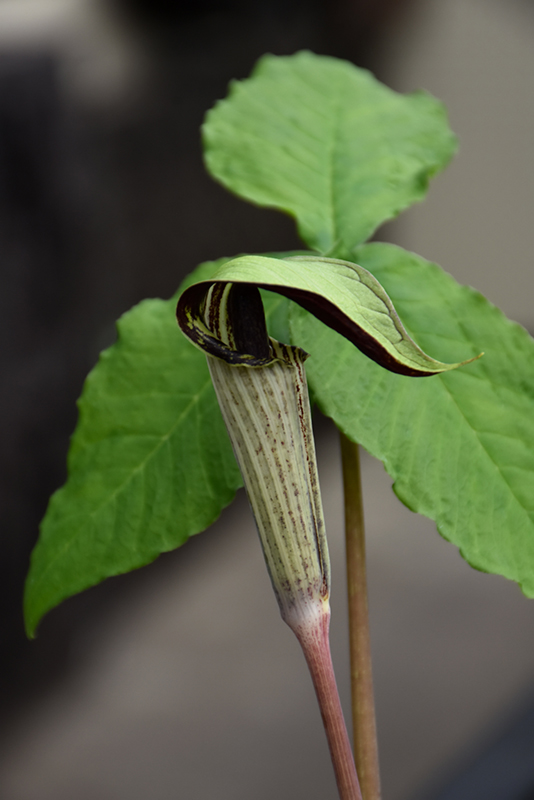Plant Height: 12 inches
Flower Height: 18 inches
Spread: 12 inches
Sunlight:
![]()
![]()
Hardiness Zone: 4
Other Names: Dragon Root
Description:
This familiar woodland plant is usually found near water; the flower is actually a striped green spathe that surrounds and shelters its flower spike; it reaches one to two feet tall by mid spring; an interesting accent planting along shaded walkways
Ornamental Features
Jack-In-The-Pulpit features solitary light green trumpet-shaped flowers with creamy white overtones, plum purple throats and dark green stripes at the ends of the stems in mid spring. Its pointy leaves remain green in color throughout the season. It produces red berries from mid to late summer.
Landscape Attributes
Jack-In-The-Pulpit is an open herbaceous perennial with an upright spreading habit of growth. Its medium texture blends into the garden, but can always be balanced by a couple of finer or coarser plants for an effective composition.
This is a relatively low maintenance plant, and usually looks its best without pruning, although it will tolerate pruning. Deer don't particularly care for this plant and will usually leave it alone in favor of tastier treats. It has no significant negative characteristics.
Jack-In-The-Pulpit is recommended for the following landscape applications;
- General Garden Use
- Naturalizing And Woodland Gardens
- Container Planting
Planting & Growing
Jack-In-The-Pulpit will grow to be about 12 inches tall at maturity extending to 18 inches tall with the flowers, with a spread of 12 inches. It grows at a slow rate, and under ideal conditions can be expected to live for approximately 5 years. As an herbaceous perennial, this plant will usually die back to the crown each winter, and will regrow from the base each spring. Be careful not to disturb the crown in late winter when it may not be readily seen! As this plant tends to go dormant in summer, it is best interplanted with late-season bloomers to hide the dying foliage. This is a self-pollinating variety, so it doesn't require a second plant nearby to set fruit.
This plant does best in partial shade to shade. It does best in average to evenly moist conditions, but will not tolerate standing water. It is very fussy about its soil conditions and must have rich, acidic soils to ensure success, and is subject to chlorosis (yellowing) of the foliage in alkaline soils. It is quite intolerant of urban pollution, therefore inner city or urban streetside plantings are best avoided, and will benefit from being planted in a relatively sheltered location. Consider applying a thick mulch around the root zone in both summer and winter to conserve soil moisture and protect it in exposed locations or colder microclimates. This species is native to parts of North America, and parts of it are known to be toxic to humans and animals, so care should be exercised in planting it around children and pets.
Jack-In-The-Pulpit is a fine choice for the garden, but it is also a good selection for planting in outdoor pots and containers. It is often used as a 'filler' in the 'spiller-thriller-filler' container combination, providing a mass of flowers against which the larger thriller plants stand out. Note that when growing plants in outdoor containers and baskets, they may require more frequent waterings than they would in the yard or garden.



